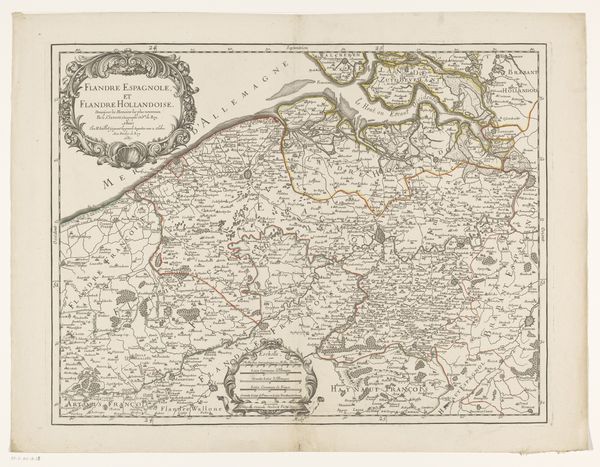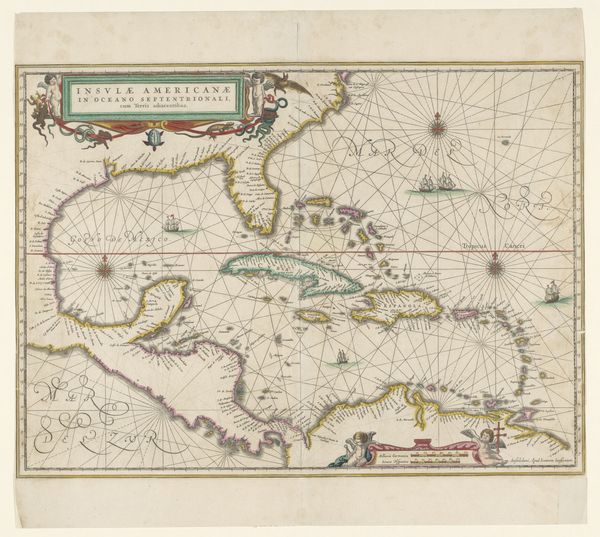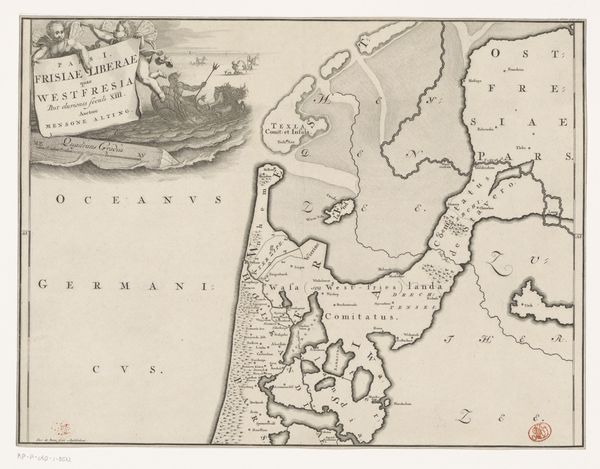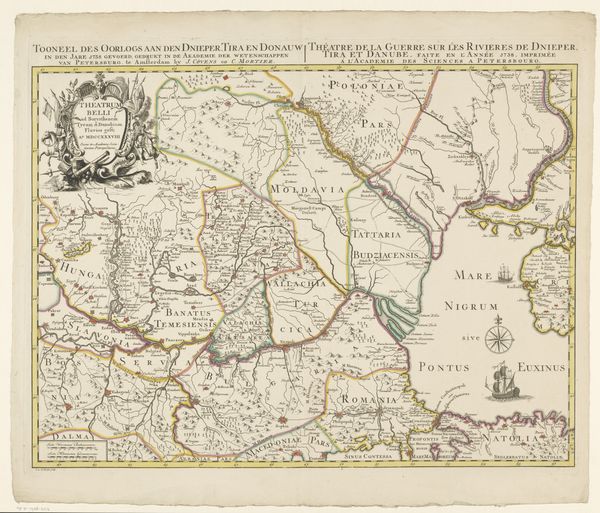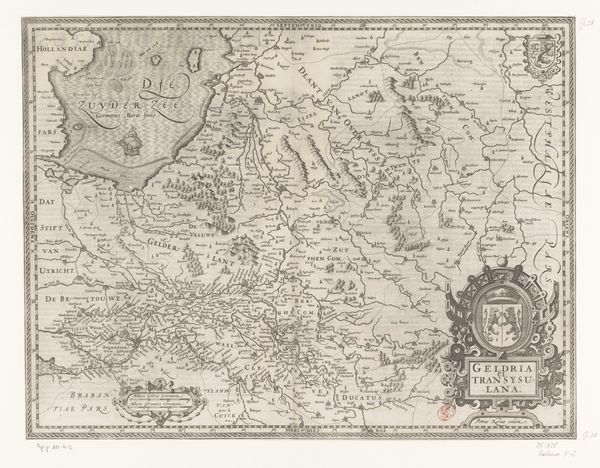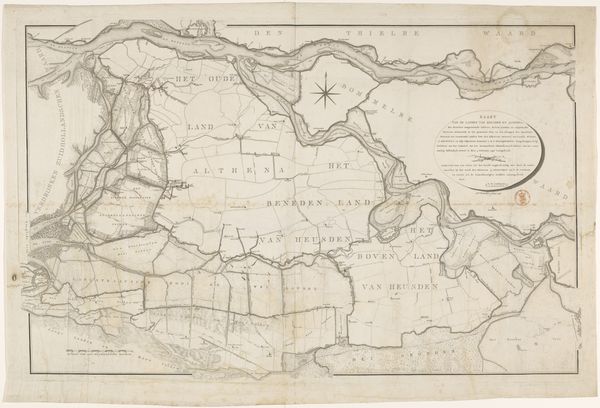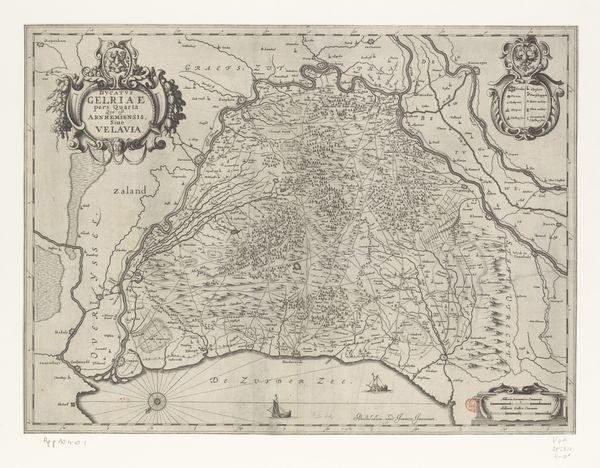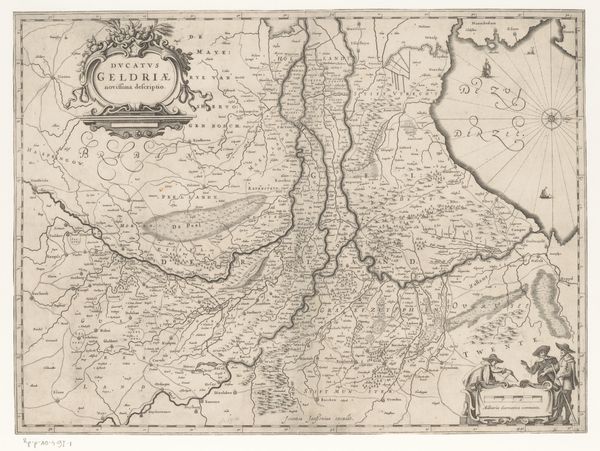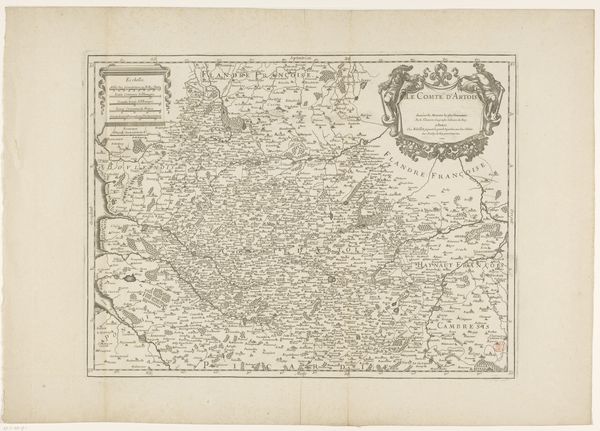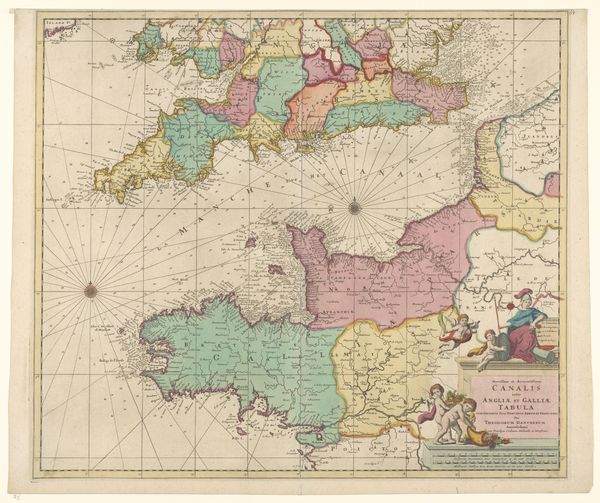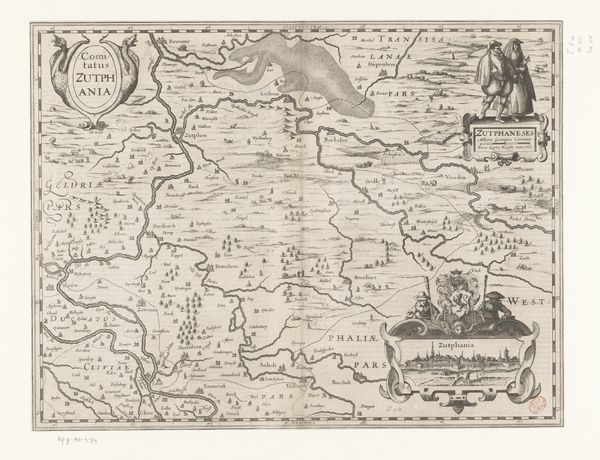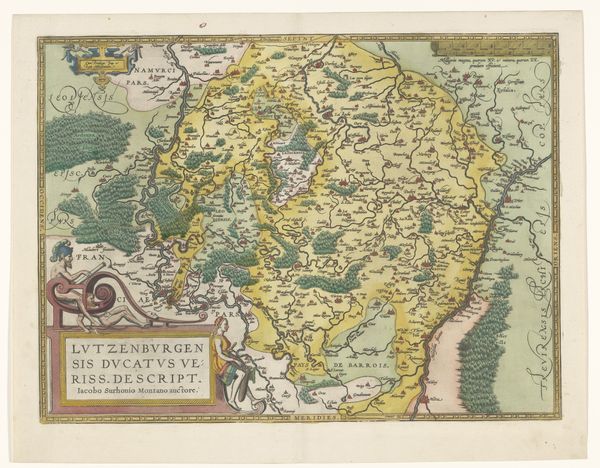
print, engraving
#
baroque
# print
#
war
#
old engraving style
#
watercolour illustration
#
history-painting
#
engraving
Dimensions: height 516 mm, width 667 mm
Copyright: Rijks Museum: Open Domain
Curator: This print is a map entitled "Kaart van de Krim tijdens de Russisch-Turkse Oorlog (1735-1739)," dating from after 1737, created by an anonymous artist. Editor: The delicate watercolour illustration gives it such a storybook feel. Yet it documents such violent realities, those borders drawn with such deliberation masking enormous upheaval for everyday people. Curator: Indeed. These visual representations of land, particularly those related to war, played a crucial role in shaping public perception and justifying political actions. Notice how place names become instruments of power. Editor: Exactly. It is interesting how the cartographer’s gaze seems to flatten the complexities of the Crimean landscape and reduces its diverse communities into objects for strategic and military consideration during that 18th-century Russo-Turkish War. Curator: Well, maps were inherently tools of statecraft at this time, of course. Look closely at the Baroque stylistic elements in the embellishments—a reminder that aesthetics were often deliberately employed to convey authority and impress viewers. Editor: The very act of mapping normalizes a certain claim to the territory; who gets included, and whose perspective is validated? The politics of such imagery in early modern warfare are always at stake when discussing it. Curator: This engraving exemplifies the period's drive to catalog and control. But let us remember the human element so often erased in these types of historical documents. Editor: Perhaps viewing it critically is a form of resistance. Even while appreciating the craftsmanship, we acknowledge that a map like this is never neutral; it always speaks for some at the expense of others. Curator: It does leave us to wonder about all the perspectives excluded. What alternative stories remain unmapped, unacknowledged? Editor: Ultimately, approaching art like this forces us to question what histories get memorialized.
Comments
No comments
Be the first to comment and join the conversation on the ultimate creative platform.

